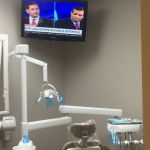How to Fix a Broken Tooth Before Seeing a Dentist
Accidents can happen at any time, and sometimes, they can result in a broken tooth. Whether it’s from a sports injury, biting into something hard, or simply an unfortunate slip, a broken tooth can cause significant pain and concern. While it's essential to see a dentist as soon as possible, there are a few steps you can take to manage the situation in the meantime. In this article, we’ll discuss how to fix a broken tooth before seeing a dentist and provide tips on minimizing pain and preventing further damage.
- 1. Initial Steps to Take
- 2. Managing Pain Effectively
- 3. How to Prevent Further Damage
- 4. Long-Term Solutions and Professional Care
1. Initial Steps to Take
After the initial shock of breaking a tooth, your first step is to assess the situation. If you experience any bleeding, rinse your mouth gently with warm water and apply a cold compress to your face to reduce swelling. Avoid using the broken tooth for chewing and try to keep it clean.
If you can find the broken piece of the tooth, it’s a good idea to save it and bring it with you to the dentist. Sometimes, the dentist may be able to reattach the piece, but it must be kept in a clean container, ideally with a little milk or saline solution.
2. Managing Pain Effectively
A broken tooth can be incredibly painful, and while it's essential to see a dentist, managing the pain until your appointment is crucial. Here are some tips for minimizing discomfort:
- Over-the-counter pain relief: Pain relievers like ibuprofen or acetaminophen can help reduce pain and inflammation. Follow the dosage instructions carefully.
- Cold compress: Apply a cold compress to the outside of your cheek to numb the area and reduce swelling.
- Avoid hot and cold foods: If your tooth is exposed, avoid eating or drinking very hot or cold substances, as this can trigger pain.
3. How to Prevent Further Damage
While waiting to see a dentist, it’s important to prevent the tooth from sustaining further damage. Here are some tips to follow:
- Use dental wax: If the broken tooth has sharp edges that are cutting your tongue or the inside of your mouth, cover them with dental wax. You can purchase this at most pharmacies.
- Avoid chewing: As tempting as it may be to chew on the opposite side of your mouth, refrain from chewing on the broken tooth to avoid additional stress or damage.
- Protect the tooth: Consider wearing a mouthguard if you have to participate in activities that could potentially cause more damage, such as sports.
4. Long-Term Solutions and Professional Care
It’s essential to visit a dentist as soon as possible for a professional assessment. Depending on the severity of the break, the dentist may recommend one of the following treatments:
- Bonding: If the break is small, the dentist may use a resin to bond the piece of tooth back together.
- Filling or crown: For more significant damage, the dentist may need to fill the tooth or place a crown to restore its function and appearance.
- Root canal: If the break is severe and affects the tooth's pulp, a root canal may be necessary to save the tooth.
Remember that only a dentist can provide a long-term solution. While the steps outlined above can help you manage a broken tooth in the short term, seeking professional care as soon as possible is crucial for your oral health.
For more information on dental care or to find the best solutions for tooth repairs, visit Dentistry Toothtruth.







 Malki Dental5.0 (52 review)
Malki Dental5.0 (52 review) Dental Group NY4.0 (266 review)
Dental Group NY4.0 (266 review) Sandra L. Vargas, DMD3.0 (8 review)
Sandra L. Vargas, DMD3.0 (8 review) South Mississippi Smiles - Gulfport4.0 (454 review)
South Mississippi Smiles - Gulfport4.0 (454 review) Dr. Michael Harper5.0 (3 review)
Dr. Michael Harper5.0 (3 review) All Seacoast Dental and Associates3.0 (38 review)
All Seacoast Dental and Associates3.0 (38 review) The Importance of Oral Health Education During Pregnancy for a Healthy Pregnancy
The Importance of Oral Health Education During Pregnancy for a Healthy Pregnancy Best Tips for Brushing Your Teeth Properly for Healthy Gums: Essential Techniques for Oral Health
Best Tips for Brushing Your Teeth Properly for Healthy Gums: Essential Techniques for Oral Health Why Skipping Dental Checkups Can Lead to Bigger Oral Health Problems
Why Skipping Dental Checkups Can Lead to Bigger Oral Health Problems Advantages of Porcelain Dental Restorations
Advantages of Porcelain Dental Restorations How Can Diabetes Cause Tooth and Gum Problems? Preventing and Managing Oral Health Issues
How Can Diabetes Cause Tooth and Gum Problems? Preventing and Managing Oral Health Issues Healthy Habits for Promoting Good Oral Health and Hygiene: Tips for a Healthy Smile
Healthy Habits for Promoting Good Oral Health and Hygiene: Tips for a Healthy Smile